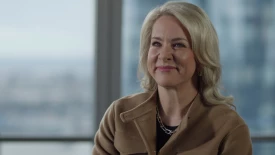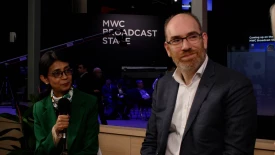Our TMT Consulting Services
We help tech companies pioneer new business models, drive change within their organizations, and sustain performance—while rediscovering purpose to create value for shareholders and society.
As consumption patterns shift, we help media companies adapt by developing impactful pricing and customer acquisition strategies; leveraging disruptive technologies like AI; and improving operational efficiency.
We help telecom companies tackle familiar challenges and seize new opportunities through seven key enablers, including data-driven customer centricity, beyond-the-core expansion, network excellence, and AI.
Our experts help clients across the 5G ecosystem to design and build a 5G-ready organization, including the operating model and culture that foster the environment necessary to capture the potential 5G offers.
Bold ideas shape the future for growth techs, and we help them develop the pricing, monetization, organization design, and operating model strategies that unlock value and scale their businesses quickly.
The semiconductor industry's complexity demands relentless innovation. We help all industry players seize opportunities by launching new products, boosting efficiency, and advancing new business models.
Digital disruption is reshaping television content. We help companies adapt and succeed in this evolving market by mastering key capabilities such as analytics, personalization, pricing, and partnerships.
Related Services
Our Clients' Success in TMT
We help TMT companies build the capabilities and tech needed to capture the opportunities the industry’s shifts and dynamics offer.
Video
April 22, 2025
Transforming from a telco to a techco required a deep commitment to inspiring engagement throughout the company. EVP and Chief Revenue Officer Ashley Haynes-Gaspar discusses partnering with BCG to navigate this change and the extraordinary results Lumen has already seen.
Video
September 30, 2024
Working with BCG, Commvault has improved time to closure of projects while handling customer data responsibly and solving problems. Here's how.
Our Tools and Solutions
Video
Video
Telco Network Manager by BCG X
Using an intuitive three-step process, Telco Network Manager by BCG X offers a transformative approach to telecom network management, enabling smarter customer-centered investment strategies while driving operational excellence.
Telco Network Manager by BCG X
Explore Our Insights on Technology, Media, and Telecommunications
Video
March 11, 2025
What’s Next for Telcos?
BCG’s Vaishali Rastogi and Franck Luisada highlight findings from the recent Value Creators report, including challenges and opportunities for operators.
Video
January 15, 2025
What Telcos Can Do to Stand Out
In a rapidly changing market, telcos must balance core offerings with innovation while attracting the best talent, BCG's Becky Frederick explains.
Explore More
Industry
Technology Industry
Industry














